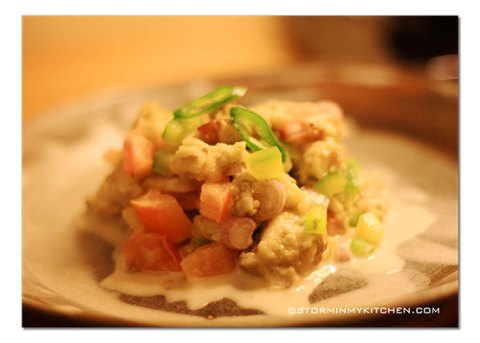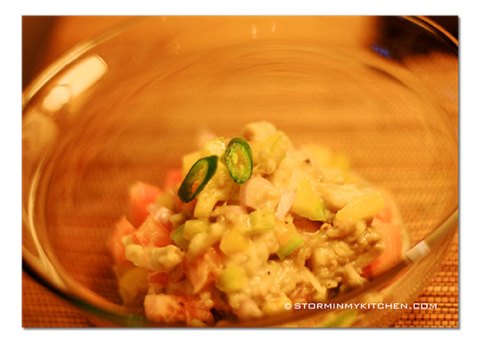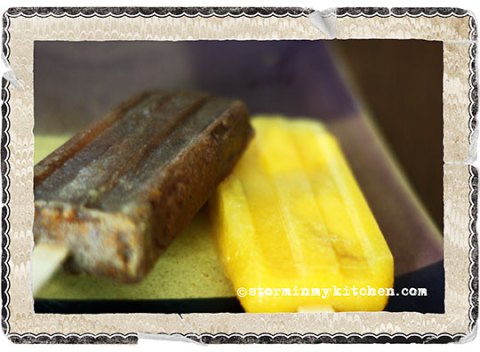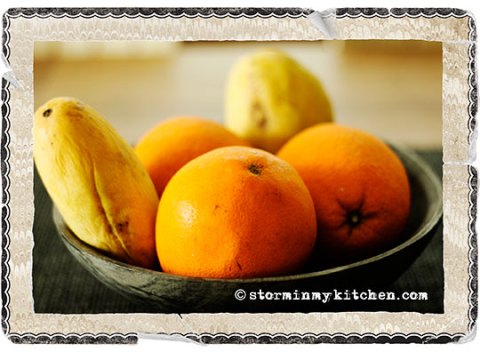Only in the Philippines
June 27, 2012 § 6 Comments
Or is it? This is about a dish I recently made and instantly fell in love with.

When I saw mustard greens (mustasa in my part of the world) in my favorite Saturday market last week, I dropped everything, went for it and got myself a bundle. I love that peppery tasting vegetable to pieces. Excited, I stormed my little library of ideas on what I can do with it… then I stumbled on Mr. MM’s recipe.
I first tasted this vegetable when I was a teenager. My grandmother used to make a Chinese version of the pickled mustasa, the name of which I loosely translate as “salty vegetable” – not exactly love at first bite but more of an acquired taste. I have yet to get my hands on that recipe, for now let me share this with you.
This month’s Kulinarya challenge (hosted by Cherrie and Tina) was a daunting “Only in the Philippines” theme, featuring uniquely Filipino dishes. I wasn’t planning on joining this month until this beautiful recipe came along. Why do I think it daunting? Because the dish that came to mind was Kare-Kare and that to me is a major production and can’t consider making in the near future with my busy schedule. Anywhow, I am posting albeit late, a dish for this challenge. I figured that this could be uniquely Filipino because the ingredients used are “very” Filipino. I call it Esaladang Mustasa at Lechon sa Bagoong. Stay with me here because this is one heck of a side salad. Ingredients and flavors scream Pinoy through and through.
Mustard Salads are not as popular in Manila as it is in the province, often eaten with fried dishes. If you like strong flavors then this dish is definitely worth a try.
Ensaladang Mustasa at Lechon sa Bagoong
(adapted from Market Manila’s Mustasa Salad with Bagoong and Kalamansi Dressing)
What You’ll Need:
- Mustard Greens
- Lechon, shredded and fried till crisp
For the Dressing:
- 10-15 Calamansi (in this recipe, I used 4-5 pieces of dayap)
- A dallop of Bagoong Alamang or Fine Shrimp Paste
- Chili flakes
- Patis or Fish sauce
- Freshly ground pepper
What You Do:
- Wash mustard greens carefully; wrap in paper-towel to dry and store in the ref for 2-3 hours to keep crispness and freshness.
- Chop them about 1/3 of an inch and put in a salad bowl.

- Make the dressing by squeezing the calamansi; strain out seeds.
- Add bagoong, siling labuyo, a dew dash of patis.
- Top with shredded lechon meat and season with freshly ground pepper.
For more inspiring recipes, visit other KCC members listed below:
Palitaw from Day of Chef by Day
Avocado Shake from Malou of Skip To Malou
Pinais na Isda from Iska of Iskandals.com
Grilled Panga ng Lapu-Lapu from Erwin of Iskandals.com
Tapsilog from Cherrie of Sweet Cherrie Pie
Kutsinta from Tina of Pinay In Texas Cooking Corner
Kare-kare from Adora of Adora’s Box
Kulawong Talong from Elizabeth of Asian In America
Kalamay na Pinipig from Jun of Jun-blog
Bed Weather Soup
June 14, 2012 § Leave a comment
Well good-bye summer and hello rainy days. It rained most of the day the other day and on a holiday to boot. We stayed home and the cool “bed” weather called for comfort food. What’s more comforting on a rainy day than hot chicken soup? Not any kind of chicken soup mind you. I was craving for my childhood favorite, Tinolang Manok, a staple in many dinner tables in my neck of the woods, including ours. A bowl of this light ginger based soup never fails to make me feel all warm and fuzzy. So I trooped to the supermarket next door for some essential ingredients.
Tinola is a Tagalog or Cebuano term for soup based dish and is traditionally cooked with chicken. Unlike the chicken soup of the west, this soup uses ginger and lemon grass to flavor. Core ingredients would be chicken (but of course), ginger (lots and lots of it), green papaya, lemon grass and this new super food called malunggay, scientifically known as Moringa. We sometimes alternate it with green pepper leaves – both have the peppery kick.
You may serve it as a starter course but it is perfect as a main dish, me thinks. I like my rice soaking with the soup almost like congee and each spoonful of chicken, green papaya and the rice is absolutely soothing.
Tinolang Manok (adapted from Namit Gid! Cookbook)
What You’ll Need:
- 1 kilo chicken, cut into serving pieces
- 1 tbsp. cooking oil
- 3 cloves garlic, minced
- 1 medium-sized onion, sliced
- 1 thumb-sized ginger, sliced
- water or rice washings to cover
- 1 stalk tanglad (lemongrass), bruised
- green papaya, seeded and cut into wedges
- patis or fish sauce
- crushed pepper
- malunggay leaves
What you do:
- Heat cooking oil and sauté garlic, onion and ginger. Add chicken pieces and brown slightly.
- Add water or rice washings and tanglad. Season with fish sauce and pepper.
- Cover and let it simmer. When chicken is half-cooked, add papaya.
- Cover and let it simmer until chicken and papaya are tender.*
- Just before serving, remove tanglad and add malunggay leaves.
- Cook for 2 more minutes. Serve hot.
* To remove the fat, let it cool until the oil floats and remove as much from the surface.
Party Favorite
May 21, 2012 § 6 Comments
This is not about fancy food fare. This salad accompanies almost any ‘inihaw” (grilled) dish that might be served during a fiesta or in my case, any gatherings at home. Easy to put together and never fails to liven up a table of food fare. I think this dish paved the way to my loving eggplants.
This month’s KCC challenge (hosted by Elizabeth and Dudut) was to feature a regional “Fiesta” specialty of one’s province. I grew up in Quezon City and fiestas I only came to know (and sometimes attend) when I am a grown up already. But this refreshing ensalada (salad) is almost always present during parties thrown at home so I think it should count as the family specialty.
Ensaladang Talong
The roasted flavor of the eggplant is the key that gives this dish a hint of the “ihaw” or charred flavor while the sili (chili) gives it a nice kick.
What you need:
- 2 tbsps. shallots, thinly sliced
- 1 salad tomato, diced
- 1 small green or red bell pepper
- 1 green finger chili (siling pangsigang), seed, deveined and chopped
- 3 eggplants (about 150g. / pc)
- ½ tsp salt
- ¼ tsp ground pepper
What you do:
- Roast the eggplants directly over an open fire until charred or in the oven. Allow to cool. Peel the eggplants and discard stems.
- Cut the peeled eggplants into small chunks. Season with salt and pepper.
- Mix all other ingredients together and drizzle with Coconut Vinaigrette.
- Garnish with the remaining portions of the bell peppers and green finger chili.
Coconut Vinaigrette
What you need:
- 1/8 cup coconut cream
- 1 gm. ginger, peeled and minced.
- ½ green finger chili, seed, deveined and chopped
- 1 tbsp vinegar (I used sukang niyog)
- salt and pepper to taste
What you do:
- Combine coconut cream, ginger, green finger, chili and vinegar in a bowl. Stir well.
- Season with salt and pepper. Stir well. Taste and adjust seasoning. Stir again.
An Adult Take on a Childhood Favorite
March 23, 2012 § 14 Comments
We used to live in a compound. It has four houses, the main house was my lola’s (grandmother’s), one was our house and the two others were my father’s siblings’. We lived there most of my life until we moved house after college. There were so many memories in that compound but summers (as a child) were especially memorable as the days were spent playing with cousins in that compound – patintero, touch-taya, Chinese garter… there even was a baseball phase. I remember catching tadpoles at the canal outside our house. Yeah those were carefree times. I can’t imagine any parent allowing their kids to play in a canal today. 😯 We’d climb and pick santol and indian mangoes from the tree in my lola’s garden, devouring it with salt or toyo (soysauce). I’d always look forward to my uncle’s treats to Sunshine Market, our neighborhood grocery. I’d go straight to the snack section and pick-up Carol-Ann’s potato chips. Oh how I love that greasy but crispy, thin chips seasoned only with salt. To this day, nothing beats Carol-Ann’s and you don’t find them anymore. I love Choco vim — I’d shake it till the chocolate at the bottom dissolves, such a thrill . And there was Magnolia’s Twin Popsies, I like both the chocolate and the orange variant. A perfect heat quencher. Childhood memories… always make me smile.
The Kulinarya Cooking Club is a club that showcases Filipino dishes by way of a monthly challenge among the members. And this is my first attempt on a fairly easy but so much fun challenge this month, thanks to Arnold of Inuyaki and Jun of Jun-blog.
The theme is “ice candy” or popsicle treats, which aptly signals the start of summer. In spite of the heat, summer is always a favorite time of the year. It means I get to soak up the sun in some remote island with some frozen delights on hand. I usually go for fresh shakes nowadays but ice candy brought back so many memories that I feel like having twin popsies right now.
My take on the theme is an adult version of a childhood favorite. I made 2 versions in honor of the 2 Magnolia Twin Popsies variants. One is a delightful orange and mango flavor with a hint of ginger while the other is a chocolate popsicle made of native cacao balls and since I love a hint of orange in my chocolate, I added some orange zest to give it a twist.
Mango-Orange-Ginger Popsies
What you need:
- 3-4 pcs. Navel oranges
- 2-3 pcs. Ripe Philippine mangoes
- 3-4 slices of ginger
- ¼ cup sugar
- A dash of Cinnamon powder or stick
What you do:
- To make the ginger syrup: In a pot, dissolve sugar with ½ cup water. Add ginger slices and cinnamon stick. Bring to a boil.
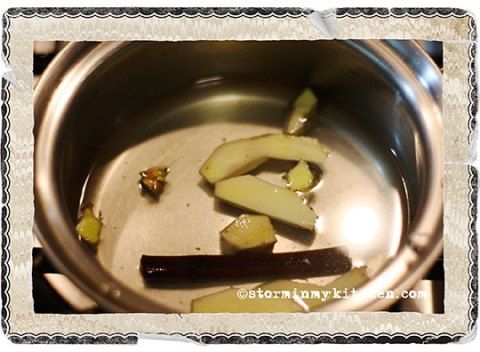
- Meanwhile make into juice all the oranges and 1 mango*. Combine orange/mango juice and the ginger syrup in a pitcher (for ease in pouring).

- Slice the rest of the mangoes into bite-sized pieces distribute in popsicle molds**.
- Pour the juice mixture. Place popsicle sticks over the mold and freeze.
Notes:
* You may use ready to drink juices too if desired. About 2 cups of orange juice to 1 cup of mango.
** The frozen mango makes a lot of different so fill it to the bream and then pour the juice.
Orange-flavored Choco Frozen Delight
What you need:
- 10 balls or more of native chocolate*
- 2 cups water
- 1 tsp orange zest
- A dash of cinnamon powder or stick
What you do:
- Dissolve choco balls in water, adding more depending on desired thickness.**
- Add a dash of cinnamon or place the stick of cinnamon while cooking the chocolate.
- When chocolate is ready, add the zest before turning off heat.
- Strain into a pitcher and let cool.
- Pour into popsicle molds, place popsicle sticks and freeze.

Notes:
* Native chocolates are made differently; it is best that you know what kind you’re using or follow instructions if it they have it.
** The thicker the chocolate, the richer the popsicle. If you make it thick enough, it is like biting into a frozen chocolate bar.
Both were delightfully refreshing. At the last-minute I decided to add the mango on the orange version and did a happy dance when I bit into the finish product. It really made a lot of difference biting into frozen mangoes. The ginger is a great twist to a familiar flavor. Makes sure though not to overdo the ginger or it will overpower the light fruity flavor.
The chocolate version, on the hand is less sweet and much richer than that of Magnolia’s. The orange zest added a fruity dimension to dark chocolate. I intentionally didn’t add milk or cream, as I wanted it dark. If milk chocolate is the preference, go ahead and add a bit of cream.
If you don’t have a popsicle mold, you may use disposable cups. To hold the sticks in place, tape over a plastic wrap and bore a hole in the middle where the stick will go. This will make the stick stay in the middle.
Stay cool everyone!







